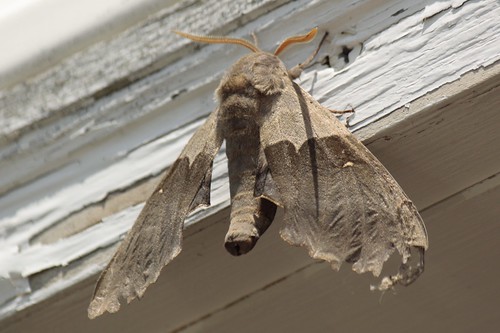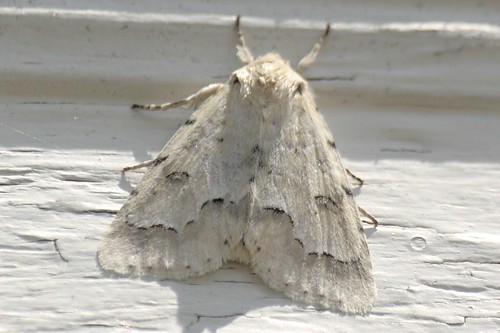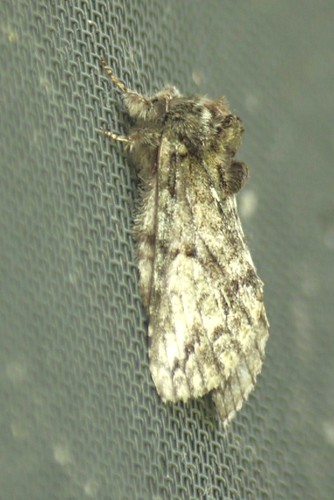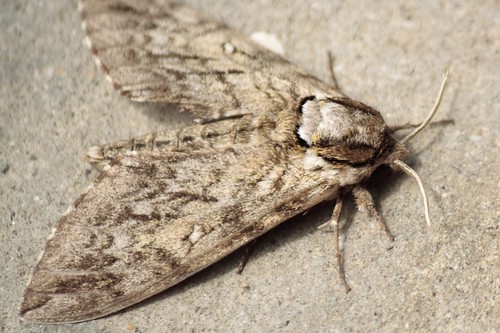This is a repost from my blog meeyauw. The post appropriately belongs here on the Photo A Day blog because of its information about moths.
Remember the four moths that I had not identified awhile back? They are now identified and I was wrong about two. Two are sphinx moths, one is a dagger moth and another is a prominent moth. All four are new species in my photographic collections. I thought I should update the post so that my photographs would be properly organized and labeled.
The moth above is a Modest Sphinx moth (Pachysphinx modesta). It is called modest because it looks as if it modestly covers itself with a cape of lighter brown. You can find more information on it here at bugguide.net.
The moth above is from in the Noctuidae family (owlet moths). It is genus Acronicta (dagger moths), and species innotata or an Unmarked Dagger moth. I have a couple of other owlet moths in my collection, so I am please to be adding this. But it sure looks like a sphinx! You can read more about this pretty one here at bugguide.net.
The moth above is a Mottled Prominent moth (Macrurocampa marthesia). This identification was a complete surprise for me. I don’t think I have any prominent moth photographs outside of this one (and its not a good shot!). According to bugguide.net “The original description of the species by Pieter Cramer was published in 1780 (some sources say 1779) with the name Phalaena marthesia Listed by some sources as Fentonia marthesia.” I don’t know about you, but I’m amazed that they were doing in 1780 what I am doing now!
The last moth, above, is the other sphinx moth. It is a Waved sphinx moth (Ceratomia undulosa).It is one of “our most common sphinx moths,” Waved “refers to the wavy lines on the adult's forewing.” Both quotations here are from the article at bugguide.net.
After being fooled as I was by thinking that all big, furry moths were sphinx moths, I reviewed what sphinx moths look like (and learned why I was confused): (source, of course, is bugguide.net):
Medium to very large. Body very robust; abdomen usually tapering to a sharp point. Wings usually narrow; forewing sharp-pointed or with an irregular outer margin. No ocelli or tympanal organs. Proboscis usually well developed, extremely long in some species that feed in flowers with deep calyxes. Antennae gradually thicken along length, then become narrower toward tip.
Larvae naked except for a few scattered hairs. Most have a prominent dorsal horn at the tip of abdomen (thus the name, hornworms).
Some are active only at night, others at twilight or dawn, and some, such as the clearwings (e.g. genus Hemaris - not to be confused with the Clearwing family, Sesiidae) feed on flower nectar during the day.
Some larvae (hornworms) do serious damage to crop plants (e.g. tomato, tobacco, potato). Hornworms are often attacked by braconid wasp parasitoids.
Other common names for sphinx moths are hawk moths (for adults) and hornworms (for the larvae or caterpillars).
I hope this clears everything up for all of us!
_/\_/\_




I love butterflies. Heck, who doesn't. So why is it that moths sort of creep me out?
ReplyDelete